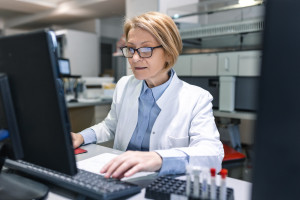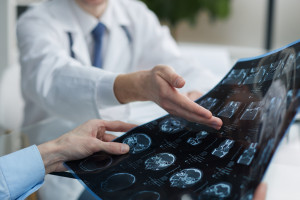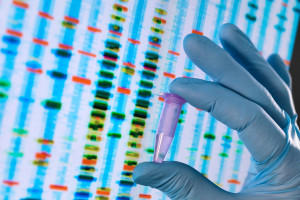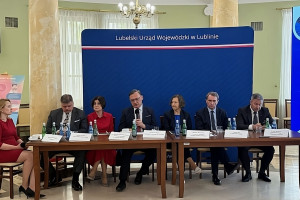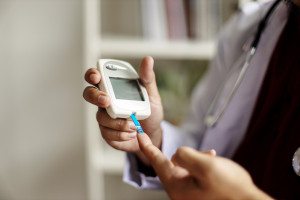SMA Patients Are Growing Up: The System Is Not Keeping Up with Medical Success

- Care for patients with spinal muscular atrophy (SMA) has reached an impressive level. When it comes to diagnosing and treating this disease, Poland is among the world leaders – the national screening program and drug program are considered exemplary
- However, as experts emphasize, there is still a long way to go to reach the ideal. The most important issues to be solved are coordinated multidisciplinary care and effective transition, i.e. smooth transition of patients from pediatric care to the adult treatment system.
- How to meet these challenges was discussed during the 13th Weekend with SMAk, the annual conference of the SMA Foundation, which took place on June 13-14 in Warsaw.
- Rynek Zdrowia was the media patron of this event
In Poland, care for patients with spinal muscular atrophy (SMA) has reached an impressive level. When it comes to diagnosing and treating this disease, we are among the world leaders – the national screening program and drug program are considered exemplary. However, as experts emphasize, there is still a long way to go to reach the ideal. The most important issues to be solved are coordinated multidisciplinary care and effective transition, i.e. smooth transition of patients from pediatric care to the adult treatment system .
How to meet these challenges was discussed during the 13th Weekend with SMA , the annual conference of the SMA Foundation, which took place on June 13-14 in Warsaw. This year's event was attended by over 100 families living with SMA and a large group of experts and specialists in various fields who provide care for people with SMA.
Dr. Anna Łusakowska from the Neurology Clinic of the Medical University of Warsaw emphasized that as part of the screening program, which operates throughout Poland, over a million newborns have already been examined. The drug program, which is currently implemented in 37 centers, is working equally well. What's more, the program is developing dynamically.
- The possibility of treatment with nusinersen during pregnancy has been introduced, the indications for the use of risdiplam have been expanded, which can now be used in almost every patient included in the program, and bridging therapy has been made possible for children with temporary contraindications to gene therapy - the expert enumerated.
In addition, as she pointed out, a new form of risdiplam has recently been approved for marketing – in tablets. Both patients and doctors are counting on the quick introduction of tablets to the drug program, because this is a form of the drug that significantly facilitates both everyday life with spinal muscular atrophy and the treatment process.
Transition: System Gap- Thanks to the fact that we currently diagnose and treat spinal muscular atrophy very well, the group of patients who reach adulthood will grow. And this is a completely new systemic challenge . Patients who turn 18 face many barriers, and the healthcare system is not ready to provide them with the continuity of multi-specialist treatment that these patients need, i.e. care not only from neurologists, but also physiotherapists, rehabilitation specialists, orthopedists or pulmonologists. The lack of access to rehabilitation after the age of 18 is a waste of the effects of a great investment in treatment - said Prof. Anna Kostera-Pruszczyk, head of the Department and Clinic of Neurology at the Medical University of Warsaw, chairwoman of the Council for Rare Diseases at the Ministry of Health.
In Poland, there is a lack of coherent paths for patients to transition from the pediatric to the adult system, and there is a lack of adult centers implementing the SMA treatment program – there are none in Białystok or Olsztyn, among others, and there are too few in the Pomeranian and Masovian provinces . But the lack of appropriate centers is not the only problem. Administrative issues are also a challenge: complicated procedures for transferring documentation, a lack of care coordinators, and a lack of formalized communication between pediatric neurologists and adult neurologists.
- For the good of the patient, not only the contact between a pediatric neurologist and an adult neurologist is invaluable, but also between a physiotherapist from a pediatric center who transfers the patient and a physiotherapist from an adult center who takes over. Certain differences in the way functional tests are performed may lead to incorrect assessments of the patient's condition, which may result in exclusion from treatment - appealed prof. Katarzyna Kotulska-Jóźwiak , chairwoman of the Coordination Team for the Treatment of Patients with Spinal Muscular Atrophy.
The need for an individual approachExperts appealed for flexibility and sensitivity of the system. Prof. Katarzyna Kotulska-Jóźwiak suggested that a good solution would be to allow the patient to stay in a children's center until the final exam, and the change of the place of treatment should depend on his/her further educational plans. This proposal was positively received by the Deputy Minister of Health Urszula Demkow , who was present at the debate.
In turn, Dr. Tomasz Potaczek indicated that scoliosis surgeries in patients aged 18–20 should still be performed in pediatric centers. – Both the surgery and perioperative care are unique in SMA and should be performed in centers with extensive experience in this area – the specialist argued.
- We need to focus on how to systematically help older children and adults with SMA. Let's remember that the goals of physiotherapy for young adults with SMA are different than in the case of small children. For example, it is to improve the quality of voice, which facilitates professional functioning," noted Dr. Agnieszka Stępień, president of the Polish Physiotherapy Association.
- Our concerns are about what the treatment provided by the new therapeutic team will look like. Will the approach to the young patient be as empathetic as in the pediatric facility? Will the points on the motor scales awarded in the pediatric hospital match the points in the new facility, and therefore, will we stay in the drug program? Who will take care of the coordination of the treatment? There are many such questions, which is why, as the SMA Foundation, we are working on a transfer card that will help reduce the enormous stress associated with the transition in patients and their parents," noted Dorota Raczek, president of the SMA Foundation, mother of 17-year-old Emilia, who suffers from spinal muscular atrophy.
The experts agreed that SMA is a disease that can serve as a model for transitional care for patients with other rare diseases. – It is worth further deepening the success that we have achieved in SMA through joint efforts and creating a nationwide transition model – emphasized Prof. Katarzyna Kotulska-Jóźwiak.
Key RecommendationsDeputy Minister of Health Urszula Demkow assured that the ministry is open to introducing systemic solutions. - Currently, the e-consultation platform for cardiology is successfully operating and there are no obstacles to extending it to rare diseases. We are also planning to implement a patient card for rare diseases. And we definitely need to fill the blank spots on the map of Poland when it comes to centers for adults - said the Minister of Health.
The experts presented specific recommendations.
- Firstly, it is necessary to create a nationwide transition programme with a pilot in selected centres.
- It is crucial to formalize and properly price e-consultations between doctors and physiotherapists, as well as to provide a care coordinator – a person who does not have to be a doctor, but will be responsible for organizing the treatment process, tests and contacts with various specialists.
- It is also postulated to maintain highly specialized procedures in pediatric centers, despite the fact that the SMA patient has reached the age of majority.
Thanks to the cooperation of doctors, physiotherapists, patient organizations and decision-makers, it is possible to create a model that will become a model for the care system in other rare diseases.
Copyrighted material - reprint rules are specified in the regulations .
rynekzdrowia

